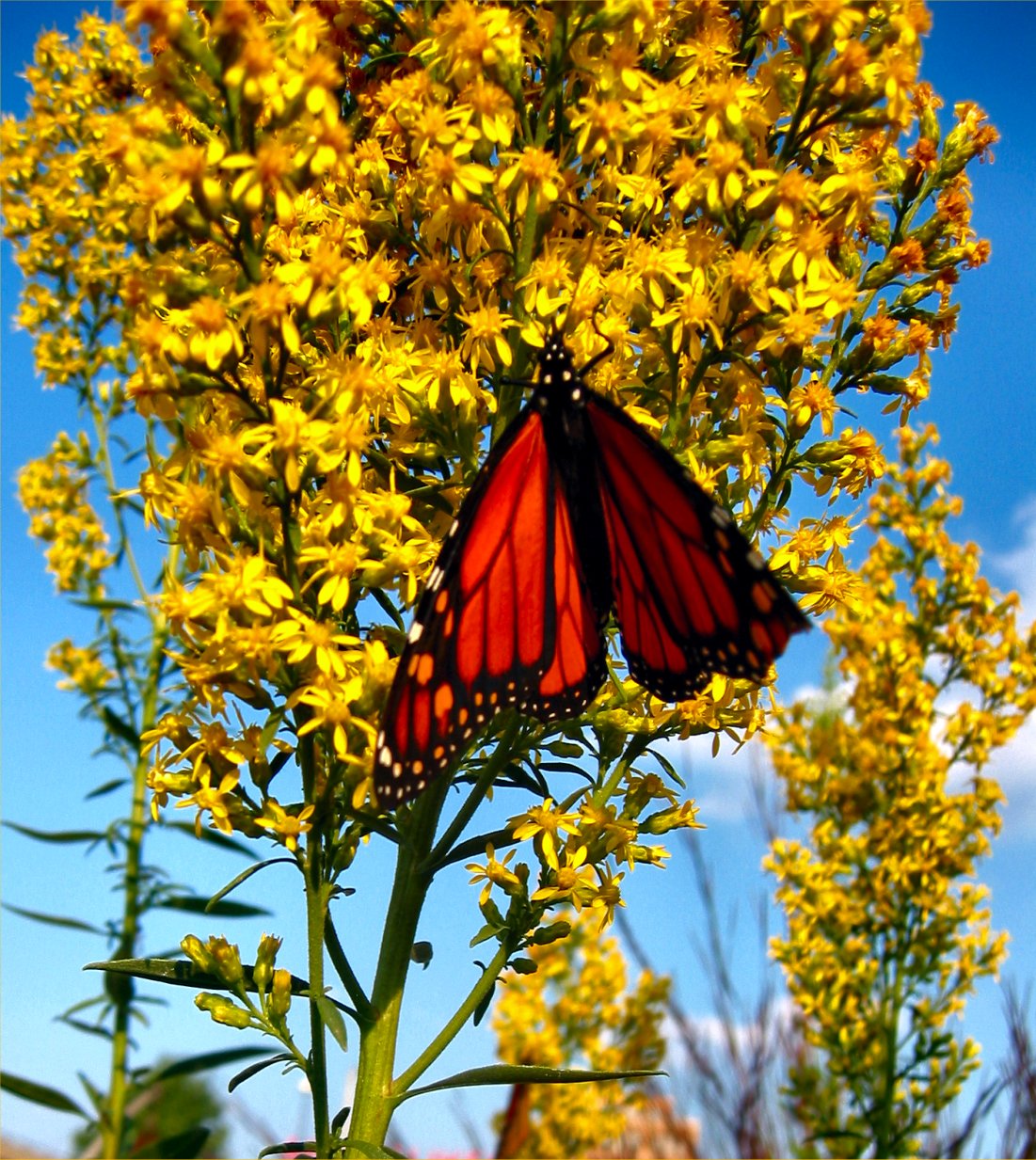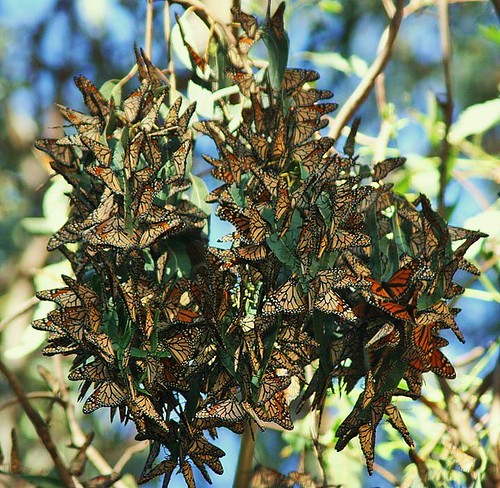Monarch Butterfly Migration

Monarch Butterfly Migration
Monarch Butterflies are most well known for their winter migration from northern areas to the milder temperatures of the south. Over two hundred species of the butterfly and moth family (Lepidoptera) often make long travels, but they are usually in search of food, not a yearly recurring migratory round trip like the Monarch migration.
The Incredible Journey of the Butterflies is a highly rated one hour PBS nature DVD documentary showing incredible filming of the Monarch Butterfly annual migration.

On one route from the northeast United States to overwinter in the mountains of Mexico, the Monark Butterfly travels well over two thousand miles. This incredible feat is performed by those who have never made the trip before. Four generations have lived and died since last year’s expedition. Observers in Australia and Costa Rica have documented the same uncanny behavior.
How can this be possible……………? Researchers remain perplexed about how a Monarch Butterfly gets its unwavering sense of direction to arrive at the exact same location, even the same roosting trees, year after year, with untrained generations? Couple this with why do they migrate so far? And when returning why do Monark Butterflies come back to their original location so far north, when flower nectar and milkweed plants are readily available in more moderate climates?
Possibly in the fall you may see this Monarch migration through your neighborhood. Look in amazement at how many can crowd together and roost for the night. I witnessed this on the Blue Ridge Parkway, just north of Asheville, NC. The Monarch keeps going and going with the endurance of an olympic athlete. Sweet nectar from goldenrod and other wild flowers supplies energy to keep these guys moving on.

Millions upon millions of butterflies participate in the butterfly migration south each autumn, to the exact location as last year. It has been estimated that as many as 50 million may occupy a particular location, and a sole tree (same one as last year) might roost 100,000 butterflies!
In North America there are basically two winter migratory destinations. Those residing west of the Rocky Mountains come south from western Canada and the northwest United States to overwinter in the coastal areas of middle to southern California. The Monarks east of the Rockies basically have a destination of the Sierra Madre Mountains in Mexico, although a smaller population winters along the southeastern coastal regions of Texas. Many Monarch Butterflies are seen in Florida during the winter, but these may not migrate and seem to enjoy their year around resident status in the sunshine state.

The Monark Butterfly migration stay in southern California may last up to six months, to coincide with the frost dates and a decline in nectar availability up north. It is estimated that Monterey County may host about one third of all the Monarch Butterflies in California. Also very popular is Pismo Beach State Park which has populations upward of 200,000. Their massive numbers cling in mammoth clusters to the foliage of bushes and to the eucalyptus, pine, and cypress trees. The sheer volume of these light weight insects often cause branches to bend to the ground. What a sight! This also causes another side effect ………… the influx of thousands of human tourists to witness this spectacle of butterfly migration.
Mexico hosts the other main destination for the migrating North American Monarch Butterfly. It was not until 1975 when it was discovered that most of them congregate west of Mexico City, in the Sierra Madre Mountains. They amass there in incredible numbers. Guesses have been made between four and ten million butterflies per acre. Despite the remote location, huge crowds of tourists come to an area called Michoacán, in the high altitude balsam fir tree forests, to view this awesome sight. The fir tree colors literally change from green to orange and black. Monarch Butterflies arrive here every year between American Halloween and the “Day of the Dead” (Dia De Los Muertos) holiday in Mexico.
As happens when unusual storms occur around the world affecting the inhabitants, millions of Monark Butterflies were killed when a large hail and ice storm occurred in this region of Mexico.

During their winter stay of the Monarch migration, the colder temperatures cause the frail little animals to become partially dormant as they preserve and store up energy for the upcoming return trip in the spring. It’s hard to believe, but scientists have noted that the trip south seems leisurely compared to returning home, when the little creatures travel up to 30 MPH. Maybe like humans anxious to get back home from vacation!

The Monark Butterfly does not breed during the southern migration or winter over. But the return trip in the spring finds them mating, and laying their eggs on milkweed plants. Three or four generations will come and go before the species reaches its most northern summer destinations, to await the migratory cycle starting again. A huge summer population, returning from the Monarch Butterfly migration, is seen in the Quebec province of Canada, and around the Great Lakes Erie and Ontario.

Monarch Butterfly Migration
